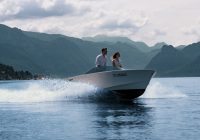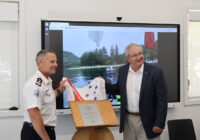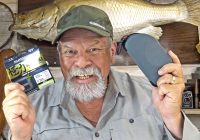From fire extinguishers and sprinklers to lifeboats and life jackets, ships of all shapes and sizes must be equipped to respond efficiently and effectively to any potential hazards that could put the lives of those onboard at risk.
However, it is not just onboard safety that is important. Ship operators must also consider the appropriate actions to take if a member of a vessel finds themselves overboard.
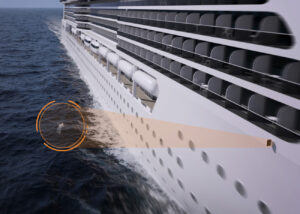
Man-overboard (MOB) technology is an area that’s attracting increasing attention in the marine industry. Novel capabilities and solutions are being actively designed, developed and deployed to better detect and locate those who have fallen from a ship.
Incidents of this kind happen regularly in the cruise industry. Nearly 400 people are reported to have gone overboard between 2000 to 2020, with around 18 to 20 incidents occurring on cruise ships in an average year.
Some initial steps have already been taken to reduce individuals’ potential to fall overboard. In 2010, the Cruise Vessel, Security and Safety Act (CVSSA) was amended to stipulate that rail heights be no less than 42 inches, making it highly unlikely that any normal adult persons should fall off a vessel simply by leaning over the side.
But because incidents continue to occur – be they accidental or out of choice – ships need a means of quickly detecting when and where an individual has fallen into the water.
The challenge with cruise ships
In the professional maritime industry, tracking MOB incidents are much easier to manage. Organisations can require crew members to use wearables that will immediately signal if they’ve gone over the side. However, this isn’t possible to enforce on cruise ships, creating the need for different technologies that can immediately detect when a passenger falls overboard.
The key word here is immediately. It’s rarely easy finding an overboard individual – with challenging sea conditions, the darkness of night (when most incidents happen) and the difficulty of changing the direction of a ship – all adding difficulties, even if the incident is quickly identified. However, on cruise ships, it can regularly be hours, not minutes, until someone raises the alarm.
In these instances, the Coastguard/emergency rescue has to search for individuals across huge swathes of sea – frequently as much as 15,000 square kilometres.
In an attempt to offset this risk, the cruise industry is required to detect or capture images of people going overboard. The choice of detect or capture images came following feedback from industry, which claimed the technology to detect had not matured sufficiently. This means that the vast majority of cruise ships only comply with the requirement to capture images of incidents.
As a result, many current approaches to man-overboard incident response remain inadequate. Typically, cameras are used along the sides of a ship, yet these are usually not manned. When individuals are reported missing, crew members will search the ship while looking back through hours and hours of CCTV footage from multiple cameras.
It’s only when they find something in the footage that a man overboard incident is confirmed and the coastguard alerted. By that point, the process of executing a successful search and rescue has become a case of finding a needle in a haystack.
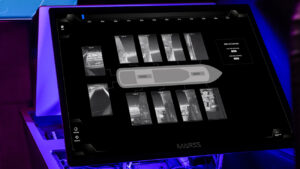
Innovation, standards and changing regulations
Without these technologies – and with man-overboard incidents still occurring year-on-year – cruise ships remain unable to respond quickly and effectively to maximise the opportunity for safe rescue and recovery.
So, what needs to change?
In 2020, after 4 years of collaboration between the cruise industry, technology vendors, class societies and regulators, ISO 21195 was published. This goal-based standard provided a baseline for the performance of MOB systems. Specifically, this standard demands that acceptable man overboard detection systems should have a minimum 95% detection probability and generate no more than one false alarm per day.
Standards such as these provide clarity into how systems perform, which can then inform the implementation of new regulations that demand compliance. It bears repeating: less than 2% of current cruise ships use effective MOB detection systems. However, with systems that pass ISO standards now within sight, the case for new and tighter regulations is strengthening.
Mike Collier from MARSS said, “This is what we’re currently working towards at MARSS with our MOBtronic automated man-overboard system. Having completed phase 1 and 2 of the standards, the technology is set to be tested on a vessel during the final phase before certification.”
“This is important progress, especially when change is needed now more than ever. By leveraging highly advanced, standard-driven technologies, the protection of vessel passengers can be hastened, prioritised and secured for the long haul.”

About Mike Collier: After spending 7 years at Carnival (6 of them Carnival Corporation HESS Policy project lead, including MOB Detection) Mike is now working with MARSS.
MARSS has spent the last 14 years developing and now delivering MOBtronic, the leading MOB detection solution. MOBtronic will achieve ISO 21195:2020 certification in 2024 to coincide with the anticipated rule-making from USCG to implement the MOB detection element of CVSSA. MARSS also provides comprehensive security and counter drone solutions, leveraging AI/ML to reduce the burden on employees and increase the advantage of technology.





